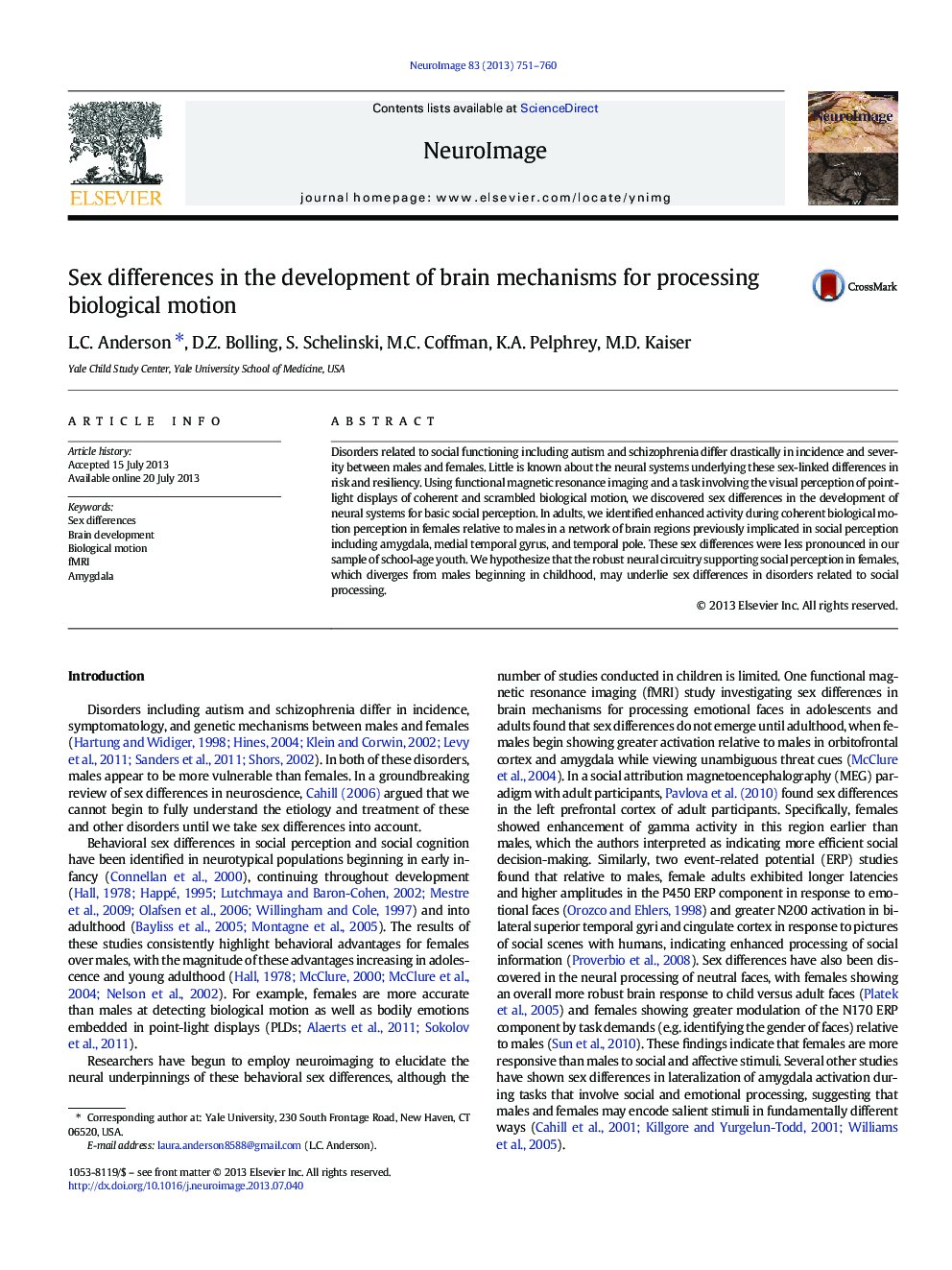| Article ID | Journal | Published Year | Pages | File Type |
|---|---|---|---|---|
| 6028245 | NeuroImage | 2013 | 10 Pages |
â¢We examine the development of sex differences in social perception using fMRI.â¢We utilize a passive viewing task of point-light displays of biological motion.â¢Female adults show greater activation in social and visual processing regions.â¢Female adults show greater functional task-related connectivity with right amygdala.â¢Fewer sex differences are evident in children and adolescents.
Disorders related to social functioning including autism and schizophrenia differ drastically in incidence and severity between males and females. Little is known about the neural systems underlying these sex-linked differences in risk and resiliency. Using functional magnetic resonance imaging and a task involving the visual perception of point-light displays of coherent and scrambled biological motion, we discovered sex differences in the development of neural systems for basic social perception. In adults, we identified enhanced activity during coherent biological motion perception in females relative to males in a network of brain regions previously implicated in social perception including amygdala, medial temporal gyrus, and temporal pole. These sex differences were less pronounced in our sample of school-age youth. We hypothesize that the robust neural circuitry supporting social perception in females, which diverges from males beginning in childhood, may underlie sex differences in disorders related to social processing.
